Search Result
Results for "
addiction
" in MedChemExpress (MCE) Product Catalog:
1
Isotope-Labeled Compounds
| Cat. No. |
Product Name |
Target |
Research Areas |
Chemical Structure |
-
- HY-103417
-
-
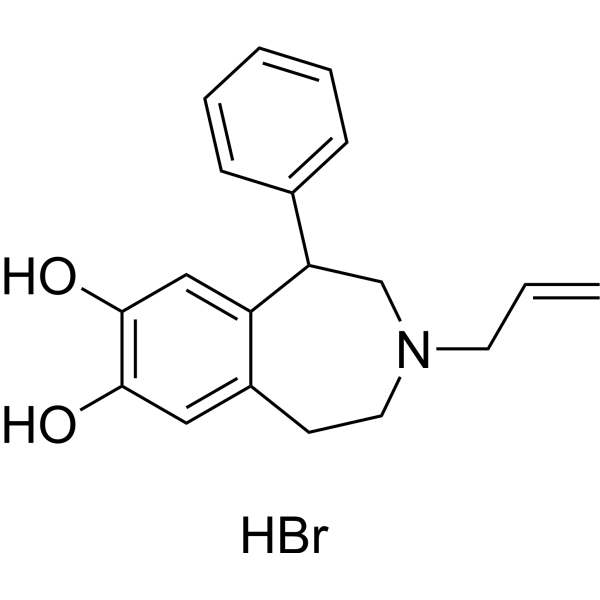
-
- HY-117883
-
|
|
Monoamine Transporter
|
Neurological Disease
|
|
GZ-793A is an orally active and selective vesicular monoamine transporter-2 (VMAT2) inhibitor, with an Ki of 0.029 µM. GZ-793A inhibits the neurochemical effects of methamphetamine (METH)-induced dopamine release. GZ-793A can be used for research of METH addiction .
|
-
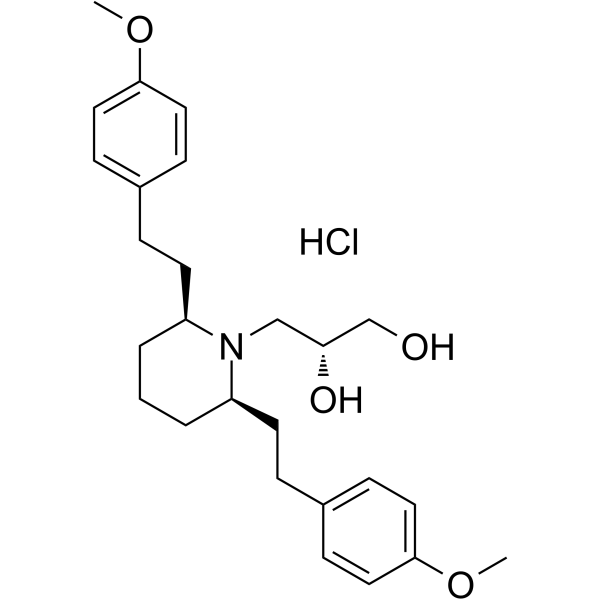
-
- HY-114237
-
|
|
Sodium Channel
|
Neurological Disease
|
|
GDC-0276 is a potent, selective, reversible and orally active NaV1.7 inhibitor with an IC50 value of 0.4 nM. GDC-0276 is well tolerated and exhibits a good pharmacokinetic profile. GDC-0276 has the potential for the treatment of pain and to address shortcomings of existing pain medications, such as addiction and off-target side effects .
|
-
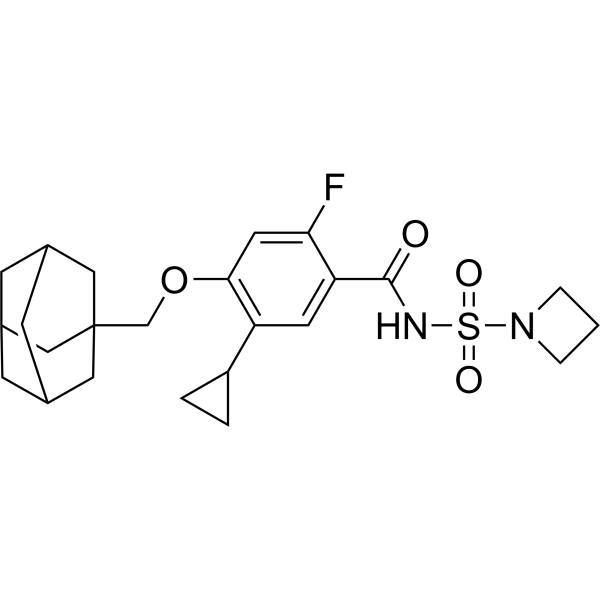
-
- HY-157931
-
|
|
Histamine Receptor
|
Neurological Disease
|
|
Anticancer agent 192 (compound XXI) is a steroid-based histamine H3 receptor antagonist with no affinity for muscarinics and hERG. Anticancer agent 192 is quite stable in human and rat liver microsomes. Anticancer agent 192 can improve the cognitive level and reduce the degree of addiction in rats in the in vivo addiction test .
|
-
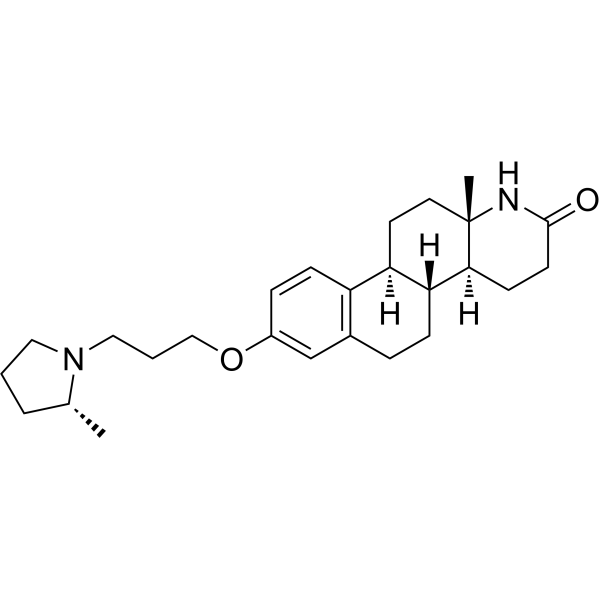
-
- HY-111308
-
-

-
- HY-P3625
-
|
|
Endogenous Metabolite
Opioid Receptor
|
Neurological Disease
|
|
Dynorphin (2-17), amide (porcine) is a dynorphin derivative with some analgesic effects. Dynorphin is a class of opioid peptides produced by the precursor protein dynorphinogen and is involved in pain, addiction and mood regulation .
|
-

-
- HY-P2046
-
|
|
Opioid Receptor
|
Neurological Disease
|
|
β-Endorphin (rat) is an endogenous opioid neuropeptide and peptide hormone. β-Endorphin (rat) has analgesic activity and also contributes to food intake in satiated rats. β-Endorphin (rat) can be used in the research of neurological diseases such as analgesia and drug addiction .
|
-

-
- HY-P1437
-
|
|
Neuropeptide Y Receptor
|
Neurological Disease
|
|
Neuropeptide S (Mouse) is a bioactive peptide. Neuropeptide S (Mouse), as a neurotransmitter/neuromodulator of 20 amino acids, can be used for the research of arousal, anxiety, locomotion, feeding behaviors, memory and agent addiction .
|
-

-
- HY-103475
-
|
|
GABA Receptor
|
Neurological Disease
|
|
GS39783 is a positive allosteric modulator (PAM) of GABABR. Positive modulation of the GABABR can be used for the research of Nicotine addiction .
|
-

-
- HY-101478
-
|
|
mGluR
Apoptosis
|
Neurological Disease
Cancer
|
|
Fenobam is a selective and orally active mGluR5 antagonist (IC50=84 nM) that can penetrate the blood-brain barrier. Fenobam shows the Kd values of 54 nM and 31 nM on rat and human recombinant mGlu5 receptors, respectively. Fenobam has anxiolytic activity, inhibits self-administration behavior in mice, and induces apoptosis in cancer cells. Fenobam can be used for research on neurological diseases, cancer and drug addiction .
|
-

-
- HY-116820
-
|
|
Dopamine Receptor
|
Neurological Disease
|
|
OS-3-106 is a potent, BBB-penetrated and selective dopamine D3 receptor (D3R) agonist. OS-3-106 binds with high affinity (Ki = 0.2 nM) at the D3R. OS-3-106 can be used for psychoactivator addiction research .
|
-

-
- HY-101478A
-
|
|
mGluR
Apoptosis
|
Neurological Disease
Cancer
|
|
Fenobam hydrate is a selective and orally active mGluR5 antagonist (IC50=84 nM) that can penetrate the blood-brain barrier. Fenobam hydrate shows the Kd values of 54 nM and 31 nM on rat and human recombinant mGlu5 receptors, respectively. Fenobam hydrate has anxiolytic activity, inhibits self-administration behavior in rat, and induces apoptosis in cancer cells. Fenobam hydrate can be used for research on neurological diseases, cancer and drug addiction .
|
-
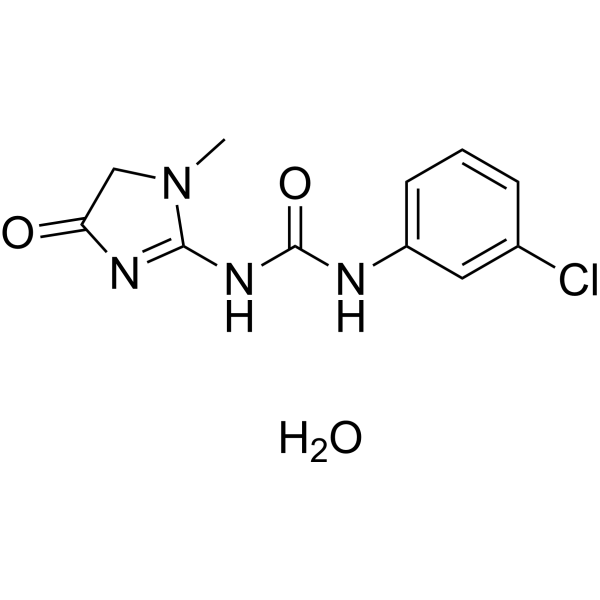
-
- HY-P5852
-
|
Alpha-conotoxin EIIB
|
nAChR
|
Neurological Disease
|
|
α-Conotoxin EIIB (Alpha-conotoxin EIIB) is a toxin peptide that can be obtained from Conus ermineus. α-Conotoxin EIIB binds to nAChR (Ki=2.2 nM). α-Conotoxin EIIB can be used in the study of neurological diseases such as schizophrenia, drug addiction, Alzheimer's disease, and Parkinson's disease .
|
-
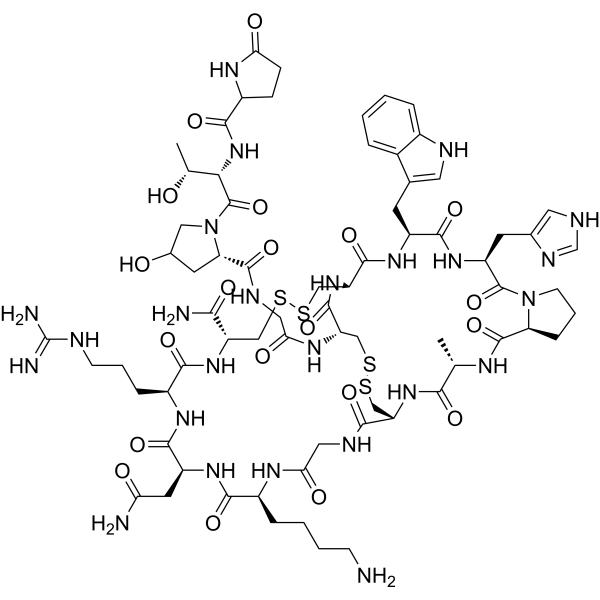
-
- HY-101834
-
|
|
Orexin Receptor (OX Receptor)
|
Others
|
|
ACT-462206 is an orally active and potent dual Orexin 1/Orexin 2 receptor antagonist with IC50s of 60 nM (Orexin 1) and 11 nM (Orexin 2), respectively. ACT-462206 exhibits brain penetration properties, and can be used for insomnia, stress/anxiety-related disorders and addiction research .
|
-
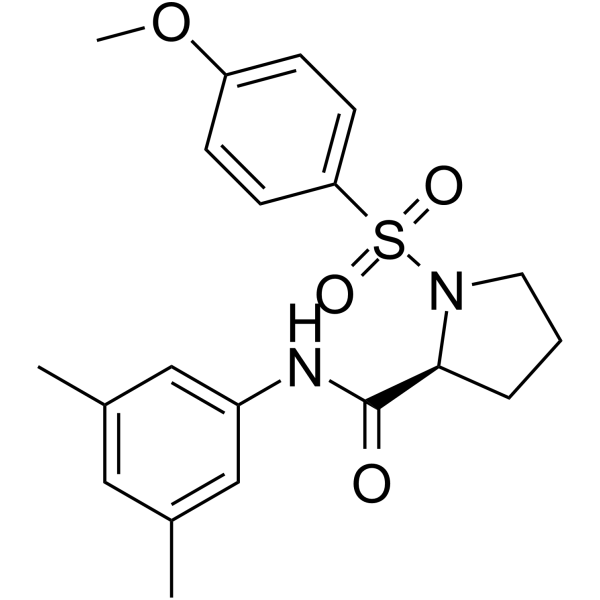
-
- HY-153458
-
|
|
Orexin Receptor (OX Receptor)
|
Neurological Disease
Metabolic Disease
|
|
Orexin receptor modulator-1 is an orexin receptor modulator. Orexin receptor modulator-1 can be used for the research of substance addiction, panic disorder, anxiety, post-traumatic stress disorder, pain, depression, seasonal affective disorder, an eating disorder, or hypertension .
|
-
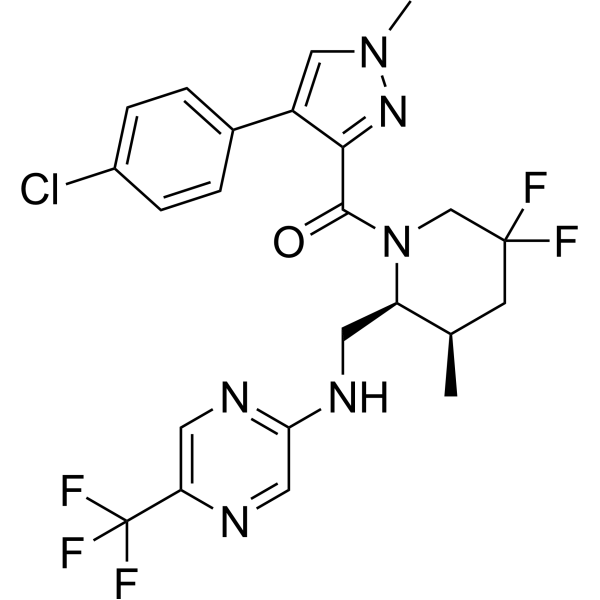
-
- HY-103673
-
|
|
Adenosine Deaminase
|
Neurological Disease
|
|
AMPD2 inhibitor 1 is an adenosine monophosphate deaminase 2 (AMPD2) inhibitor, used in the research of sugar craving, salt craving, umami craving, and addictions including agent, tobacco, nicotine and alcohol addictions.
|
-
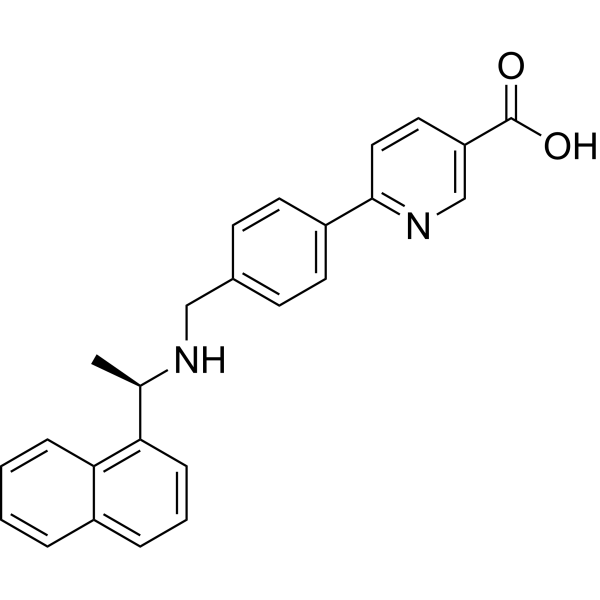
-
- HY-147319
-
|
|
Others
|
Neurological Disease
|
|
RTI-7470-44 is a potent, selective and blood-brain barrier (BBB) penetrant human trace amine-associated receptor subtype 1 (hTAAR1) antagonist with an IC50 value of 8.4 nM and a Ki value of 0.3 nM. RTI-7470-44 has moderate metabolic stability, and a favorable preliminary off-target profile. RTI-7470-44 can increase the spontaneous firing rate of mouse ventral tegmental area (VTA) dopaminergic neurons. RTI-7470-44 can be used for researching schizophrenia, agent addiction, and Parkinson’s disease (PD) .
|
-
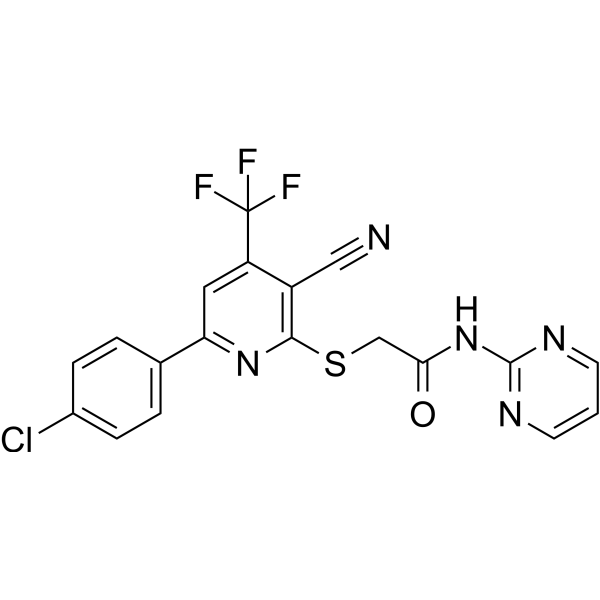
-
- HY-13052
-
-
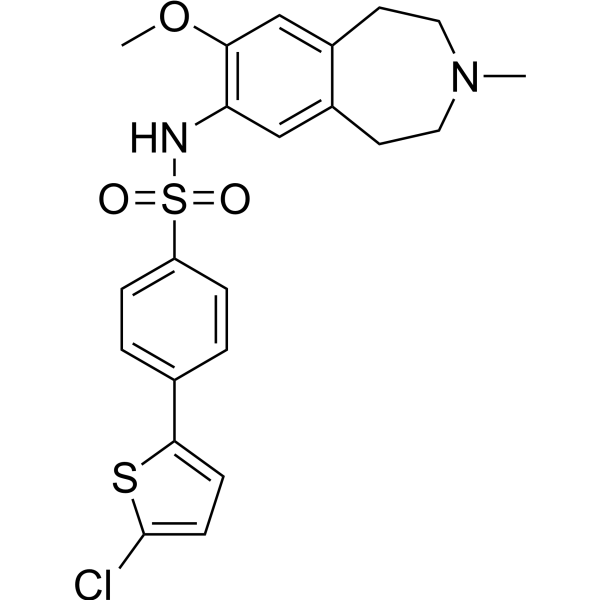
-
- HY-17030
-
|
Calcium N-acetylhomotaurinate
|
GABA Receptor
|
Neurological Disease
|
|
Acamprosate calcium(Campral EC) is a GABA receptor agonist and modulator of glutamatergic systems; reduces alcohol consumption in animal models of alcohol addiction.
|
-

-
- HY-116181
-
|
|
Dopamine Receptor
|
Neurological Disease
|
|
YQA14 is a high affinity dopamine D3 receptor antagonist. YQA14 is anti-opioid addiction agent. YQA14 inhibits Morphine/Cocaine-induced conditioned place preference (CPP) in animals .
|
-
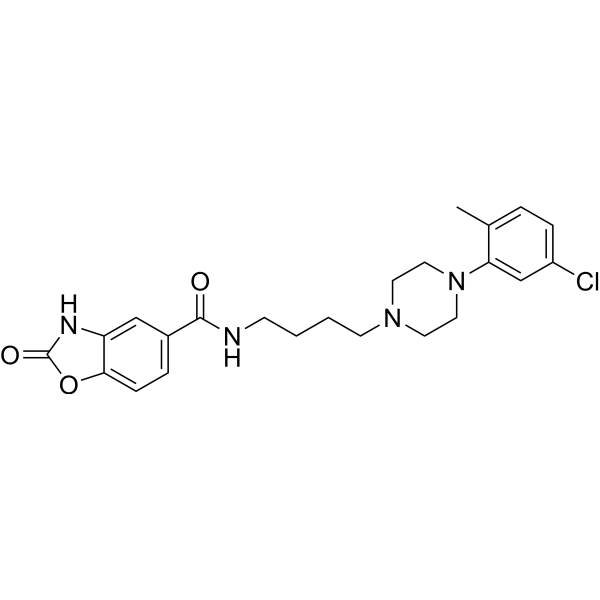
-
- HY-12698
-
|
|
Opioid Receptor
|
Neurological Disease
|
|
NNC63-0532 is a novel non-peptide nociceptin receptor (ORL1) agonist, with EC50s of 305?nM. NNC63-0532 plays important roles in many disorders such as pain, drug addiction .
|
-

-
- HY-N6960
-
|
Stepholidine; (-)-Stepholidine; L-SPD
|
Dopamine Receptor
|
Neurological Disease
|
|
L-Stepholidine (Stepholidine) exhibits mixed dopamine D1 receptor agonist and D2 antagonist properties. L-Stepholidine has neuroprotective effect and inhibits Heroin-induced reinstatement. L-Stepholidine is a potential medication for the research of opiate addiction .
|
-
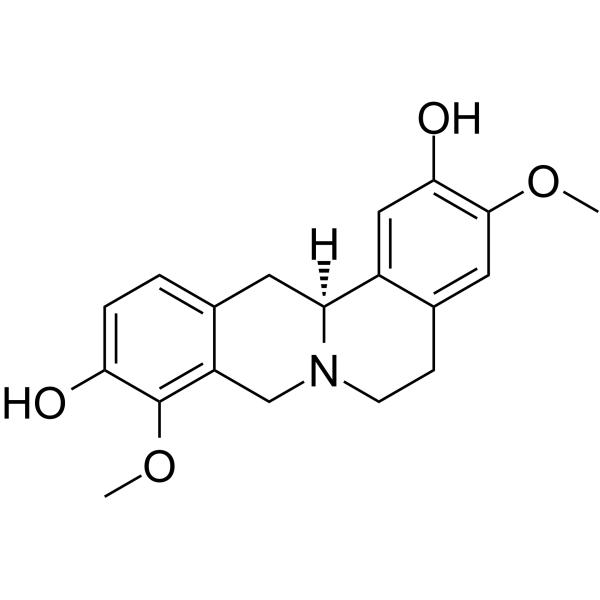
-
- HY-P5306
-
|
|
nAChR
|
Neurological Disease
|
|
α-Conotoxin TxID is a potent α3β4 nAChR antagonist with an IC50 value of 12.5 nM. α-Conotoxin TxID has weak inhibition activity of closely related α6/α3β4 nAChR (IC50= 94 nM). α-Conotoxin TxID has the potential for novel smoking cessation drug development .
|
-

-
- HY-107457
-
|
|
mGluR
|
Neurological Disease
|
|
AZD-8529 is a potent, highly selective and orally bioavailable positive allosteric modulator of mGluR2, with an EC50 of 285 nM, and shows no positive allosteric modulator responses at 20-25 M on the mGluR1, 3, 4, 5, 6, 7, and 8 subtypes.
|
-
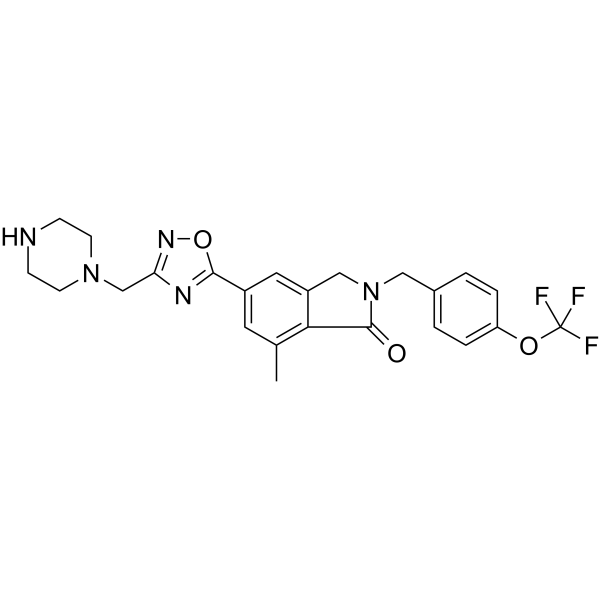
-
- HY-107457A
-
|
|
mGluR
|
Neurological Disease
|
|
AZD-8529 mesylate is a potent, highly selective and orally bioavailable positive allosteric modulator of mGluR2, with an EC50 of 285 nM, and shows no positive allosteric modulator responses at 20-25 M on the mGluR1, 3, 4, 5, 6, 7, and 8 subtypes .
|
-
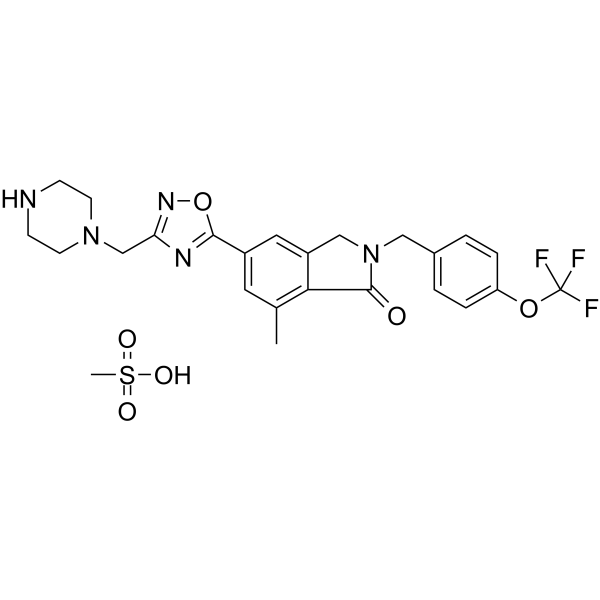
-
- HY-12697
-
|
|
Dopamine Receptor
|
Neurological Disease
|
|
NGB 2904 is a potent, selective, orally active and brain-penetrated antagonist of dopamine D3 receptor, with a Ki of 1.4 nM. NGB 2904 shows selectivity for D3 over D2, 5-HT2, α1, D4, D1 and D5 receptors (Kis=217, 223, 642, >5000, >10000 and >10000 nM, respectively). NGB 2904 antagonizes Quinpirole-stimulated mitogenesis .
|
-
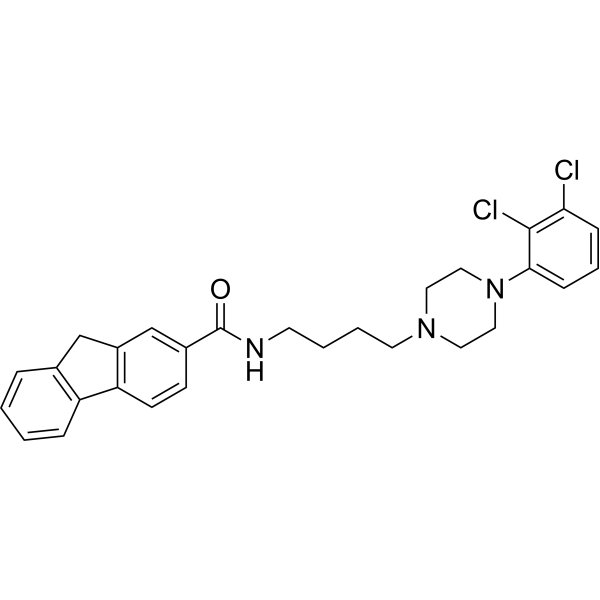
-
- HY-108626
-
|
NCGC84
|
Neuropeptide Y Receptor
|
Neurological Disease
|
|
ML154 (NCGC84) is a selective, brain-penetrant and non-peptide neuropeptide S receptor (NPSR) antagonist with a pA2 of 9.98. ML154 potently inhibits NPS-stimulated cellular calcium, cAMP, and ERK phosphorylation responses with IC50 values of 36.5 nM, 22.1 nM, and 9.3 nM, respectively .
|
-
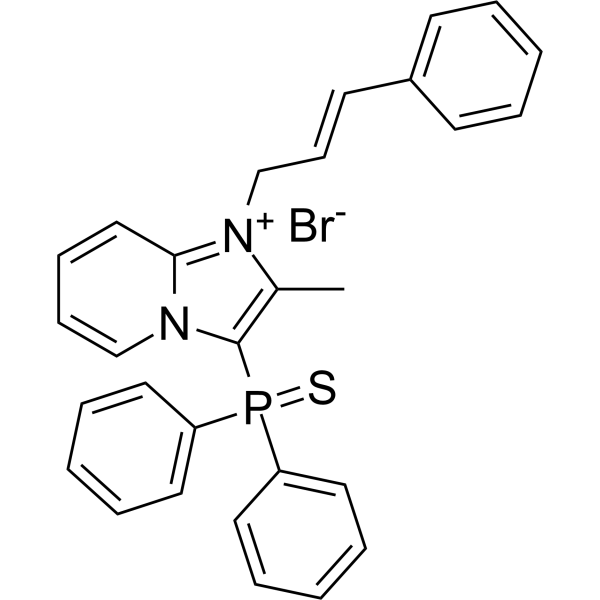
-
- HY-103573
-
|
|
mGluR
|
Neurological Disease
|
|
VU 0360223 is a potent metabotropic glutamate receptors (mGluR) negative allosteric modulator with an IC50 of 61 nM .
|
-

-
- HY-P1335
-
|
|
Opioid Receptor
|
Neurological Disease
|
|
CTAP is a potent, highly selective, and BBB penetrant μ opioid receptor antagonist, with an IC50 of 3.5 nM. CTAP displays over 1200-fold selectivity over δ opioid (IC50=4500 nM) and somatostatin receptors. CTAP can be used for the study of L-DOPA-induced dyskinesia (LID) and opiate overdose or addiction .
|
-
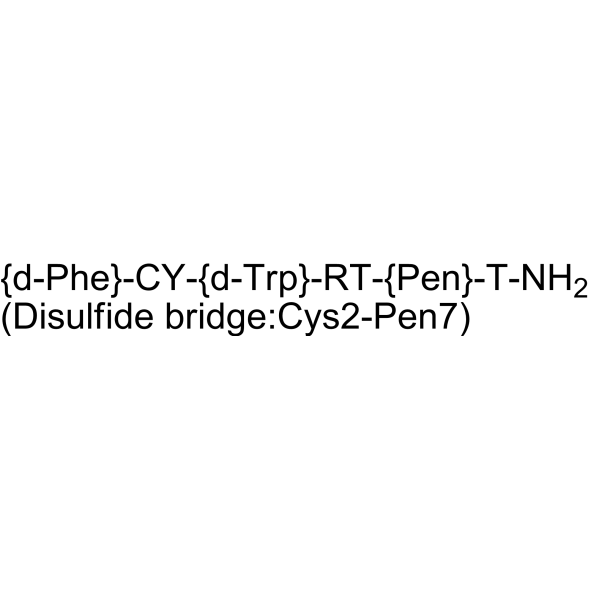
-
- HY-P1335A
-
|
|
Opioid Receptor
|
Neurological Disease
|
|
CTAP TFA is a potent, highly selective, and BBB penetrant μ opioid receptor antagonist, with an IC50 of 3.5 nM. CTAP TFA displays over 1200-fold selectivity over δ opioid (IC50=4500 nM) and somatostatin receptors. CTAP TFA can be used for the study of L-DOPA-induced dyskinesia (LID) and opiate overdose or addiction .
|
-

-
- HY-155850
-
|
|
Pyruvate Kinase
|
Neurological Disease
|
|
CIAC001 is a Pyruvate Kinase PKM2 inhibitor with anti-neuroinflammatory activity. CIAC001 inhibits LPS-induced proinflammatory nitric oxide (NO) production and protects immunologically active BV-2 cells (IC50=2.5 μM). CIAC001 also has anti-neuroinflammation in mouse models and inhibits chronic morphine-induced addiction .
|
-
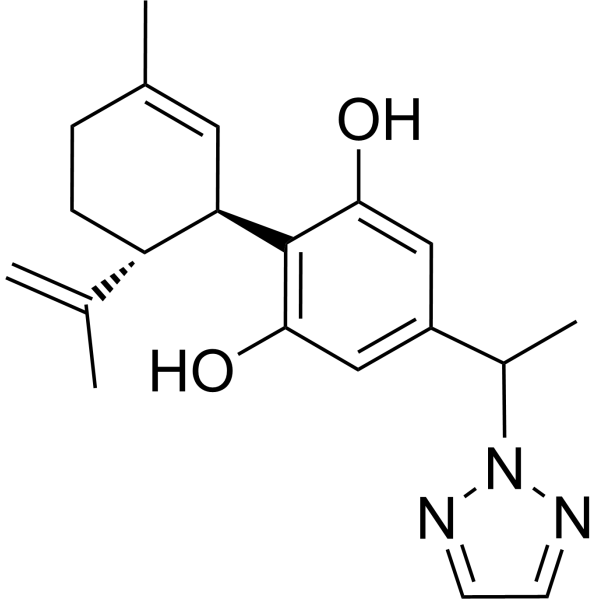
-
- HY-106660
-
|
|
Dopamine Receptor
|
Neurological Disease
|
|
BP 897 hydrochloride is a potent and partial dopamine D3 receptor agonist and a weak D2 receptor antagonist. BP 897 hydrochloride displays a high affinity at the dopamine D3 receptor (Ki=0.92 nM) and a 70 times lower affinity at the D2 receptor (Ki=61 nM) .
|
-
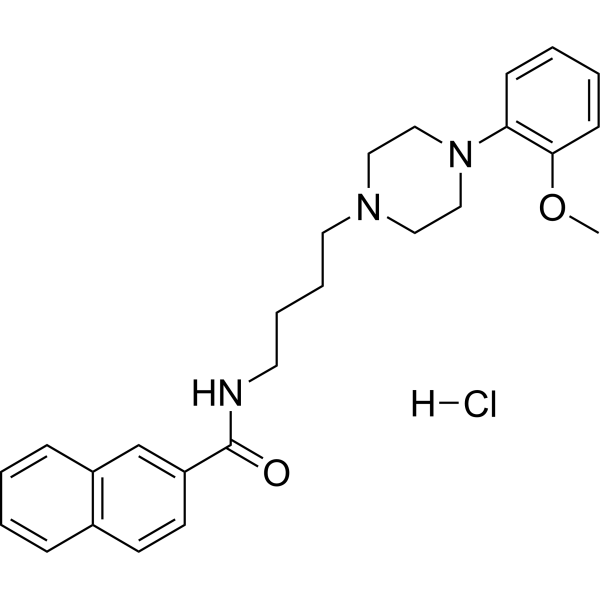
-
- HY-114085
-
|
|
Dopamine Receptor
|
Neurological Disease
|
|
BP 897 is a potent and partial dopamine D3 receptor agonist and a weak D2 receptor antagonist. BP 897 displays a high affinity at the dopamine D3 receptor (Ki=0.92 nM) and a 70 times lower affinity at the D2 receptor (Ki=61 nM) .
|
-
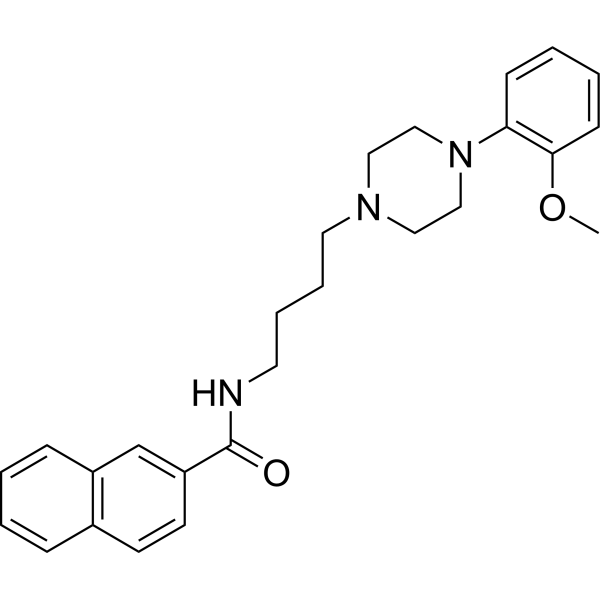
-
- HY-137231B
-
|
|
nAChR
|
Neurological Disease
|
|
(S)-UFR2709 (hydrochloride) is a competitive nAChR antagonist and displays higher affinity for α4β2 nAChRs than for α7 nAChRs. (S)-UFR2709 (hydrochloride) decreases anxiety and reduces ethanol consumption and ethanol preference in alcohol-preferring rats. (S)-UFR2709 (hydrochloride) acts as an anxiolytic agent and can be used for the study of nicotine addiction .
|
-
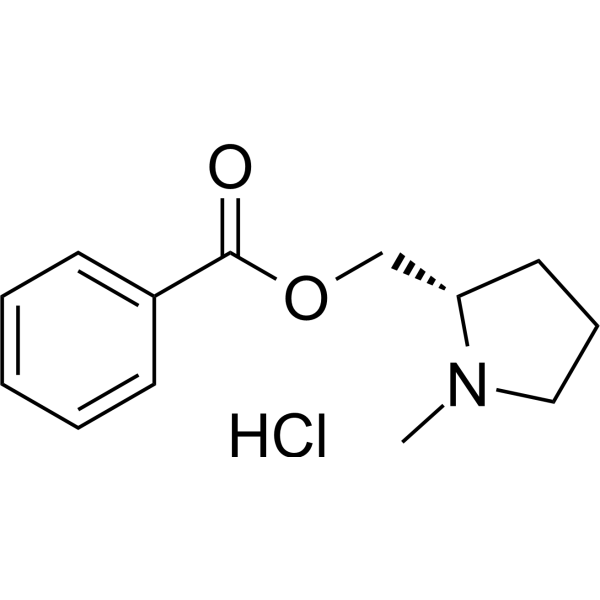
-
- HY-137231A
-
|
|
nAChR
|
Neurological Disease
|
|
(S)-UFR2709 is a competitive nAChR antagonist and displays higher affinity for α4β2 nAChRs than for α7 nAChRs. (S)-UFR2709 decreases anxiety and reduces ethanol consumption and ethanol preference in alcohol-preferring rats. (S)-UFR2709 acts as an anxiolytic agent and can be used for the study of nicotine addiction .
|
-
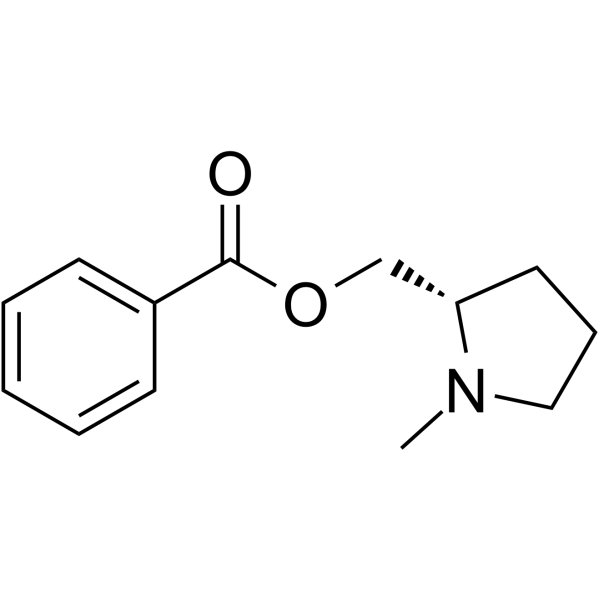
-
- HY-12844
-
|
|
Opioid Receptor
|
Neurological Disease
|
|
Ro 64-6198 is a potent, selective, nonpeptide, high-affinity, high cellular permeability and brain penetration N/OFQ receptor (NOP) agonist with an EC50 value of 25.6 nM. Ro 64-6198 is at least 100 times more selective for the NOP receptor over the classic opioid receptors. Ro 64-6198 can be used for stress and anxiety, addiction, neuropathic pain, cough, and anorexia .
|
-
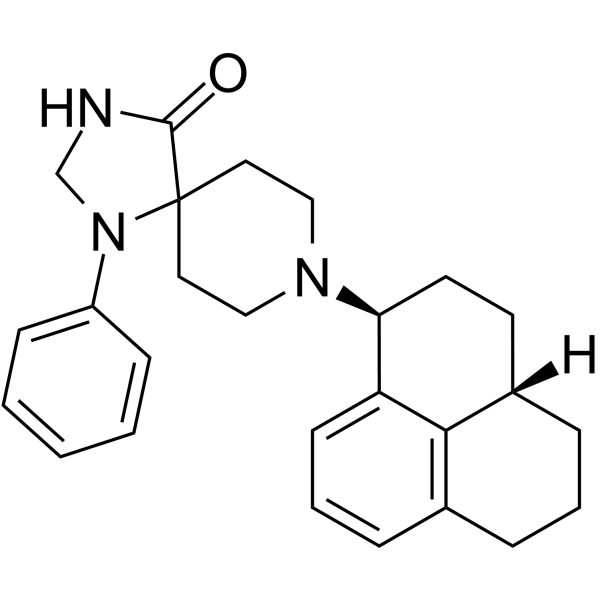
-
- HY-147428
-
|
MM-110; (±)-18-Methoxycoronaridine
|
nAChR
Parasite
|
Infection
Neurological Disease
|
|
Zolunicant (MM-110) is a potent inhibitor against nicotinic α3β4 receptors with an IC50 of 0.90 μM to combat addiction. Zolunicant can decrease the self-administration of several addictive agents including morphine, methamphetamine, nicotine, and ethanol in rat model. Zolunicant can be studied as a potential research for multiple forms of agent abuse . Zolunicant also reveals a potent leishmanicide effect against Leishmania amazonensis .
|
-
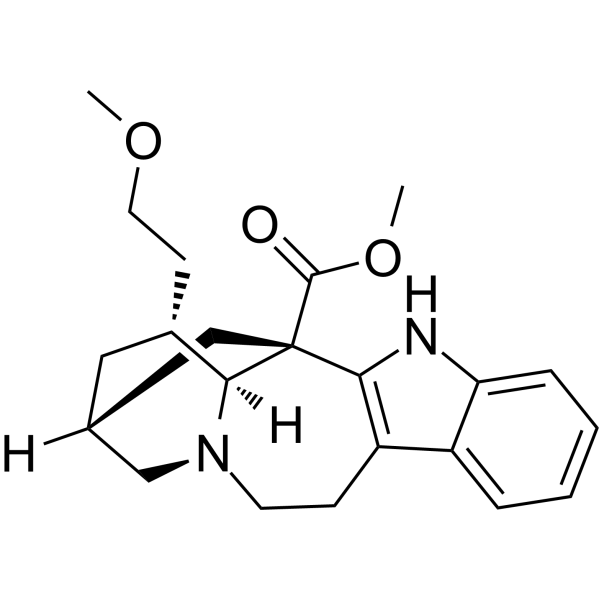
-
- HY-157172
-
|
|
Integrin
|
Infection
Neurological Disease
|
|
MorHap is a heroin hapten. MorHap conjugated to tetanus toxoid (TT), palm-CV2, and to monophosphoryl lipid A (MPLA)-containing liposomes partially blocks heroin-induced analgesia and hyperlocomotion in mice. MorHap designed conjugates also significantly inhibits HIV-1 binding to α4β7 receptors. MorHap can be used in research to develop vaccines related to heroin addiction and HIV-1 infection .
|
-
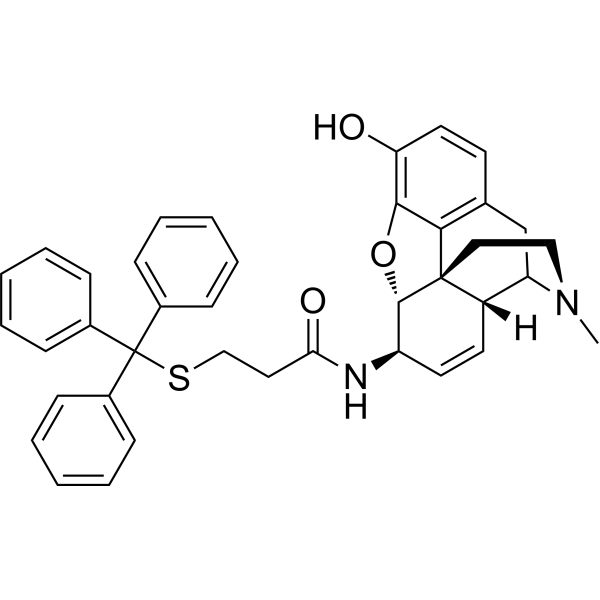
-
- HY-14565
-
|
ABT-089
|
nAChR
|
Neurological Disease
|
|
Pozanicline (ABT-089) selectively activate neuronal nicotinic acetylcholine receptor (nAChR) subtypes, is a novel cholinergic agent that is a partial agonist at α4β2* nAChRs (Ki=16 nM) and shows high selectivity for α6β2* and α4α5β2 nAChR subtypes, the binding affinity (Ki, rat) for Pozanicline to [ 3H] cytisine sites is 16.7 nM.
Pozanicline reverses nicotine withdrawal-induced cognitive deficits, may be an effective component of novel therapeutic strategies for nicotine addiction .
|
-
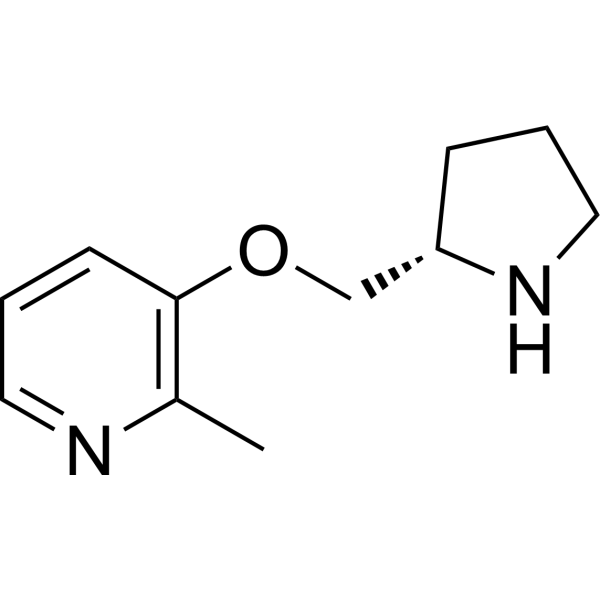
-
- HY-156533A
-
|
|
5-HT Receptor
|
Neurological Disease
Inflammation/Immunology
Cancer
|
|
5-HT2 agonist-1 (Compound 24) free base is a 5-HT2A & 5-HT2B & 5-HT2C agonist, with IC50s of 10 nM, 8.3, and 1.6 nM respectively. 5-HT2 agonist-1 free base can be used for research of depression, alcoholism, tobacco and cocaine addiction, inflammation, cluster headache, PTSD, seizure disorders and other CNS disorders .
|
-

-
- HY-156533
-
|
|
5-HT Receptor
|
Cancer
|
|
5-HT2 agonist-1 (Compound 24) is a 5-HT2A & 5-HT2B & 5-HT2C agonist, with IC50s of 10 nM, 8.3, and 1.6 nM respectively. 5-HT2 agonist-1 free base can be used for research of depression, alcoholism, tobacco and cocaine addiction, inflammation, cluster headache, PTSD, seizure disorders and other CNS disorders .
|
-
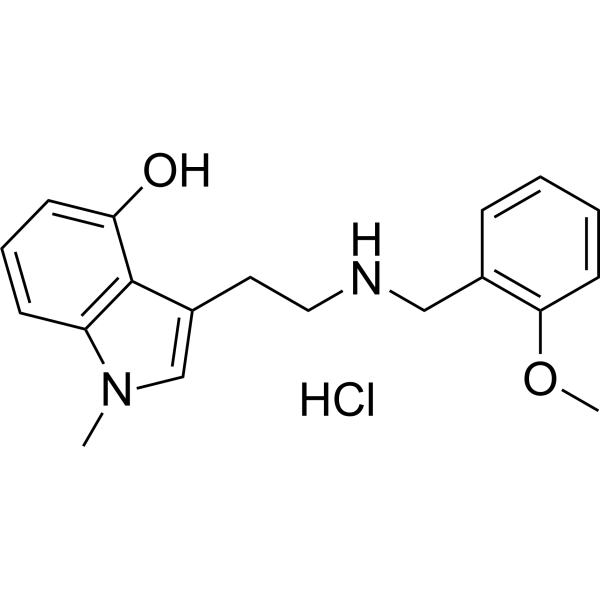
-
- HY-10019AS1
-
|
|
Isotope-Labeled Compounds
|
Inflammation/Immunology
|
|
Varenicline-d4 hydrochloride is a deuterium labeled Varenicline (dihydrochloride) (HY-10019A) . Varenicline (CP 526555) dihydrochloride is a potent partial agonist for α4β2 nicotinic acetylcholine receptor (nAChR) with an EC50 value of 2.3 μM. Varenicline dihydrochloride is a full agonist for α3β4 and α7 nAChRs with EC50 values of 55 μM and 18 μM, respectively . Varenicline dihydrochloride is a nicotinic ligand based on the structure of cytosine, and has the potential for smoking cessation treatment .
|
-

-
- HY-156534
-
|
|
5-HT Receptor
|
Neurological Disease
Inflammation/Immunology
Cancer
|
|
5-HT2A&5-HT2C agonist-1 (Example 2) is a 5-HT2A & 5-HT2C agonist, with IC50s of 196 nM and 0.9 nM respectively. 5-HT2A&5-HT2C agonist-1 can be used for research of depression, alcoholism, tobacco and cocaine addiction, inflammation, cluster headache, PTSD, seizure disorders and other CNS disorders .
|
-
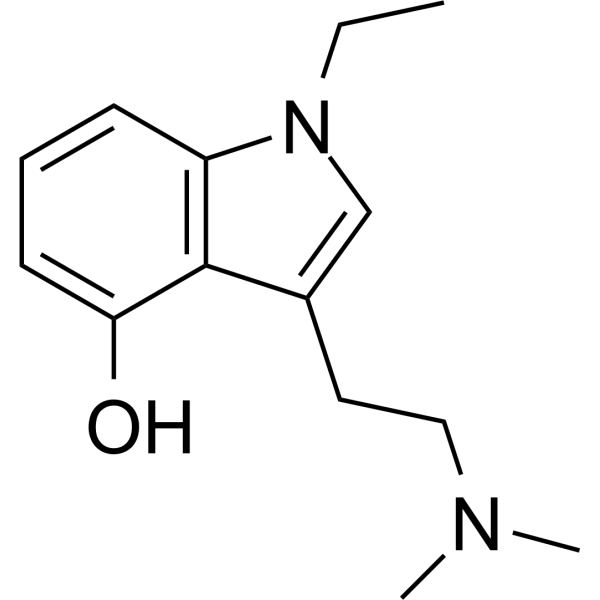
-
- HY-N7506
-
|
Delta3,2-Hydroxylbakuchiol
|
Monoamine Transporter
Dopamine Transporter
|
Neurological Disease
|
|
Hydroxyisobakuchiol (Delta3,2-Hydroxylbakuchiol), an analog of Bakuchiol (HY-N0235) isolated from Psoralea corylifolia (L.), is a potent monoamine transporter inhibitor. 13-Hydroxyisobakuchiol is more selective for the dopamine transporter (DAT) (IC50=0.58 μM) and norepinephrine transporter (NET) (IC50=0.69 μM) than for the serotonin transporter (SERT) (IC50=312.02 μM). 13-Hydroxyisobakuchiol has the potential for the research of disorders such as Parkinson's disease and depression .
|
-
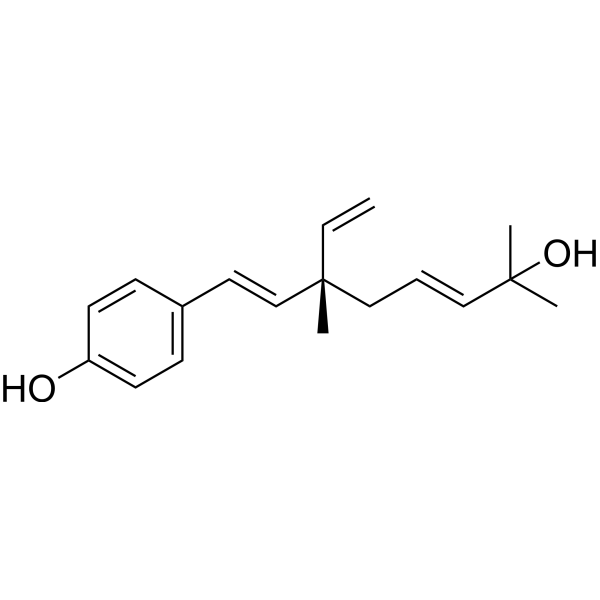
-
-
HY-L083
-
|
|
2043 compounds
|
|
Mutations in oncogenes and tumor suppressor genes can modify multiple signaling pathways and in turn cell metabolism, which facilitates tumorigenesis. The paramount hallmark of tumor metabolism is “aerobic glycolysis” or the Warburg effect, coined by Otto Warburg in 1926, in which cancer cells produce most of energy from glycolysis pathway regardless of whether in aerobic or anaerobic condition. Usually, cancer cells are highly glycolytic (glucose addiction) and take up more glucose than do normal cells from outside. The increased uptake of glucose is facilitated by the overexpression of several isoforms of membrane glucose transporters (GLUTs). Likewise, the metabolic pathways of glutamine, amino acid and fat metabolism are also altered. Recent trends in anti-cancer drug discovery suggests that targeting the altered metabolic pathways of cancer cells result in energy crisis inside the cancer cells and can selectively inhibit cancer cell proliferation by delaying or suppressing tumor growth.
MCE provides a unique collection of 2043 compounds which cover various tumor metabolism-related signaling pathways. These compounds can be used for anti-cancer metabolism targets identification, validation as well anti-cancer drug discovery.
|
| Cat. No. |
Product Name |
Target |
Research Area |
-
- HY-P1437
-
|
|
Neuropeptide Y Receptor
|
Neurological Disease
|
|
Neuropeptide S (Mouse) is a bioactive peptide. Neuropeptide S (Mouse), as a neurotransmitter/neuromodulator of 20 amino acids, can be used for the research of arousal, anxiety, locomotion, feeding behaviors, memory and agent addiction .
|
-
- HY-P3646
-
|
|
Peptides
|
Neurological Disease
|
|
[DAla2] Dynorphin A (1-9) (porcine) is a dynorphin, which can be used in studies of analgesic, addiction, and depression.
|
-
- HY-P3625
-
|
|
Endogenous Metabolite
Opioid Receptor
|
Neurological Disease
|
|
Dynorphin (2-17), amide (porcine) is a dynorphin derivative with some analgesic effects. Dynorphin is a class of opioid peptides produced by the precursor protein dynorphinogen and is involved in pain, addiction and mood regulation .
|
-
- HY-P2046
-
|
|
Opioid Receptor
|
Neurological Disease
|
|
β-Endorphin (rat) is an endogenous opioid neuropeptide and peptide hormone. β-Endorphin (rat) has analgesic activity and also contributes to food intake in satiated rats. β-Endorphin (rat) can be used in the research of neurological diseases such as analgesia and drug addiction .
|
-
- HY-P5852
-
|
Alpha-conotoxin EIIB
|
nAChR
|
Neurological Disease
|
|
α-Conotoxin EIIB (Alpha-conotoxin EIIB) is a toxin peptide that can be obtained from Conus ermineus. α-Conotoxin EIIB binds to nAChR (Ki=2.2 nM). α-Conotoxin EIIB can be used in the study of neurological diseases such as schizophrenia, drug addiction, Alzheimer's disease, and Parkinson's disease .
|
-
- HY-P5306
-
|
|
nAChR
|
Neurological Disease
|
|
α-Conotoxin TxID is a potent α3β4 nAChR antagonist with an IC50 value of 12.5 nM. α-Conotoxin TxID has weak inhibition activity of closely related α6/α3β4 nAChR (IC50= 94 nM). α-Conotoxin TxID has the potential for novel smoking cessation drug development .
|
-
- HY-P2298
-
|
|
Peptides
|
Neurological Disease
|
|
TAT-P4-(DATC5)2 is a high-affinity peptide inhibitor of the PICK1 (protein interacting with C kinase-1) PDZ domain, with a Ki of 1.7 nM. TAT-P4-(DATC5)2 can inhibit addiction in rats .
|
-
- HY-P2298A
-
|
|
Peptides
|
Neurological Disease
|
|
TAT-P4-(DATC5)2 TFA is a high-affinity peptide inhibitor of the PICK1 (protein interacting with C kinase-1) PDZ domain, with a Ki of 1.7 nM. TAT-P4-(DATC5)2 TFA can inhibit addiction in rats .
|
-
- HY-P1335
-
|
|
Opioid Receptor
|
Neurological Disease
|
|
CTAP is a potent, highly selective, and BBB penetrant μ opioid receptor antagonist, with an IC50 of 3.5 nM. CTAP displays over 1200-fold selectivity over δ opioid (IC50=4500 nM) and somatostatin receptors. CTAP can be used for the study of L-DOPA-induced dyskinesia (LID) and opiate overdose or addiction .
|
-
- HY-P1335A
-
|
|
Opioid Receptor
|
Neurological Disease
|
|
CTAP TFA is a potent, highly selective, and BBB penetrant μ opioid receptor antagonist, with an IC50 of 3.5 nM. CTAP TFA displays over 1200-fold selectivity over δ opioid (IC50=4500 nM) and somatostatin receptors. CTAP TFA can be used for the study of L-DOPA-induced dyskinesia (LID) and opiate overdose or addiction .
|
| Cat. No. |
Product Name |
Category |
Target |
Chemical Structure |
| Cat. No. |
Product Name |
Chemical Structure |
-
- HY-10019AS1
-
|
|
|
Varenicline-d4 hydrochloride is a deuterium labeled Varenicline (dihydrochloride) (HY-10019A) . Varenicline (CP 526555) dihydrochloride is a potent partial agonist for α4β2 nicotinic acetylcholine receptor (nAChR) with an EC50 value of 2.3 μM. Varenicline dihydrochloride is a full agonist for α3β4 and α7 nAChRs with EC50 values of 55 μM and 18 μM, respectively . Varenicline dihydrochloride is a nicotinic ligand based on the structure of cytosine, and has the potential for smoking cessation treatment .
|
-

Your information is safe with us. * Required Fields.
Inquiry Information
- Product Name:
- Cat. No.:
- Quantity:
- MCE Japan Authorized Agent:




















































